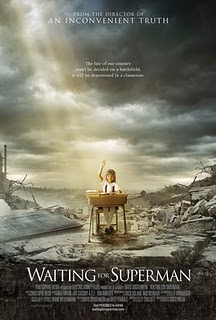A few weeks ago, Joy and I sat down and watched last year's Oscar winner for Best Foreign Language film,
The Lives of Others. I knew a little about it, but was unprepared for the physical, emotional reaction the film elicited from me. You must watch this film; I'll give no secrets away, but one small feature of the film struck me as a brilliant commentary on our current musical culture.
Surely you've seen the film's primary image, even if you haven't paid much attention to the movie itself. In this image, we see a small man with pointed features and a bald head almost consumed by a set of large earphones. He is listening, and so wrapped up in the act that he is oblivious to almost anything around him.
What he is listening to is someone else's life, the eponymous "lives of others." He does this because it is his job but also because his home life is sterile, a point underlined by the cool colors that populate his apartment and the blue wash through which the filmmakers shot those scenes. In contrast, the lives into which his ear protrude are full of warm colors and rich fabrics, lives full of love and connection. The listeners seeks this connection above everything else.
joy.
How like the listening man is our civilization? Everywhere you go you see earbuds or opportunities for listening to music, for sounds to take us out of our every day and connect with people we don't know and will never meet face to face. But we seek to live through those sounds often to the exclusion of what is around us.
But that small point is a side street on the road to my main observation. In the special features, the director mentions that he did not set out to make a film about East Germany or the Stasi. Instead, he started with a quote. Supposedly, according to
Florian Henckel von Donnersmarck, who wrote as well as directed the film, Lenin once remarked that he had to force himself to stop listening to Beethoven's Appassionata sonata because if he did not, he would never have completed the Russian revolution. Reading in Alex Ross' book last month I found a similar quote from Lenin: "I can't listen to music too often. It affects your nerves, makes you want to say stupid nice things, and stroke the heads of people who could create such beauty while living in this vile hell."
It was this image, that music has the power to stop us from doing the horrible things we so often do, that inspired the film and my thoughts today. Think through the implications of that idea. Wars, murders, suicides, abuse, all stopped if we would only listen to the right music. It certainly happens in intriguing ways during
The Lives of Others through a piano work titled, appropriately, "Sonata for a Good Man." And the notion of music's power is certainly not new - Plato argued in Book 3 of the Republic that "When modes of music change, the fundamental laws of the state change with them" and Augustine in his
Confessions noted the opposite of
Lenin's comment, writing th
at music could easily sway his mind from things of heaven.
However, our culture has given us a new wrinkle in this age old debate: if music does have power over us, what does it mean for our society that so much of our listening takes place in isolation? We now create the soundtrack of our lives, jumping from one song to the next, one genre rubbing up against another, with little regard for the lives of others. Sure we can share that soundtrack by publishing our playlists, but the communal aspect of music has drastically changed through drastic reduction. Almost any sense of a shared musical culture is gone in favor of a rash of subcultures. The movie offers one thesis for how this situation ultimately plays out, but I'd be curious to hear others' thoughts.






